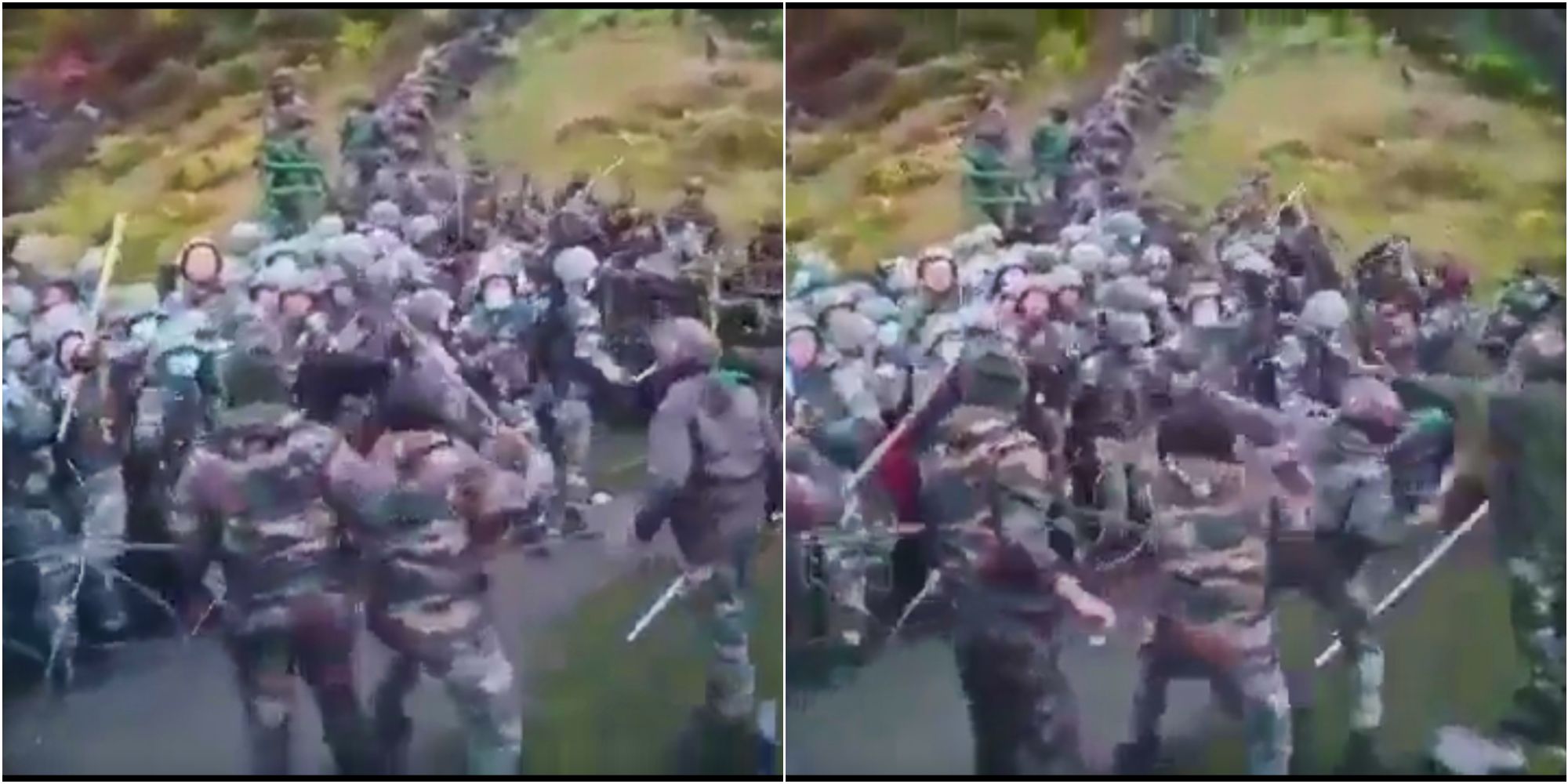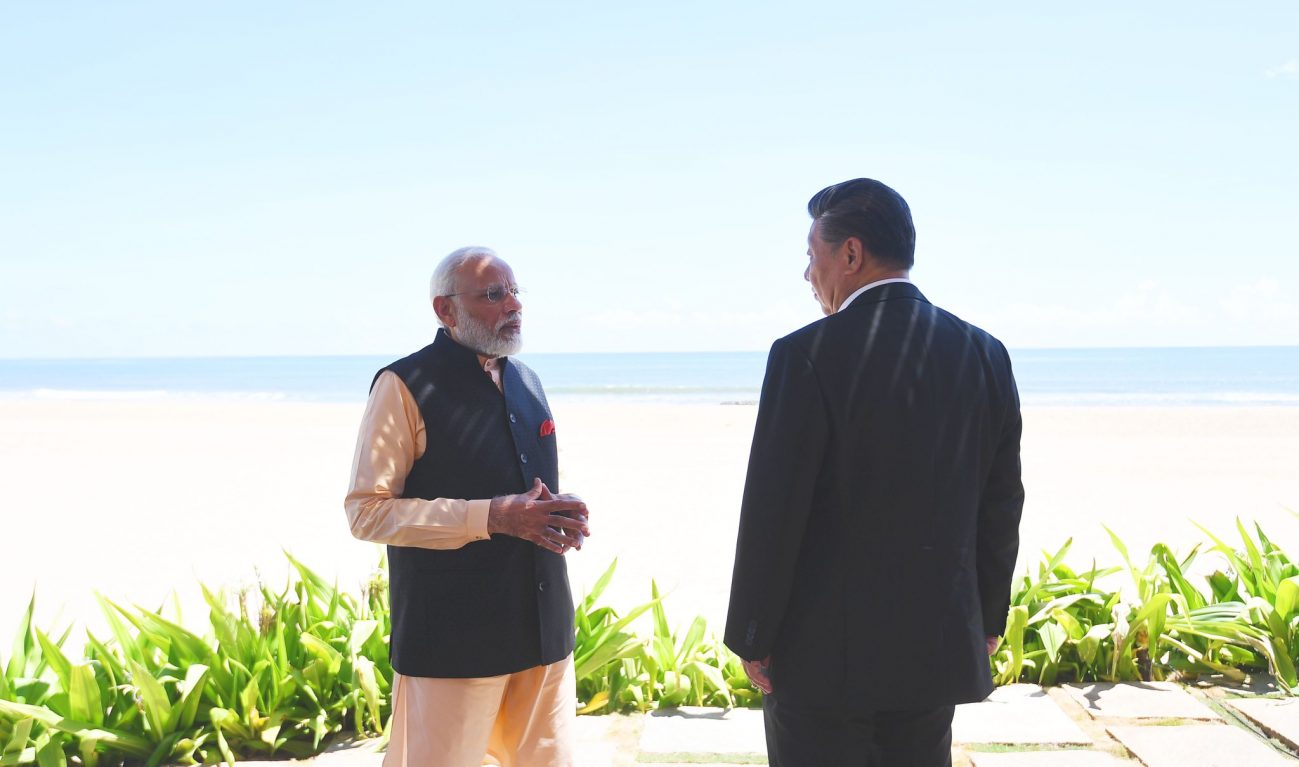A day after officials from India and China met for the 18th round of Corps Commander Level talks after a four-month hiatus, Chinese military analysts claimed that the border dispute has transitioned from a stalemate to “normalized management.”
The talks between the Corps Commanders of both sides are held intermittently to resolve the border conflict that broke out in the summer of 2020.
A statement released by the Indian Ministry of External Affairs noted that the two sides had an open and thorough discussion. The talks dwelled on resolving the pertinent issues in the Western Sector along the LAC, bringing about peace and tranquility in the border regions and advancing bilateral relations.
The recent discussions are believed to have ended without any breakthrough on the issue of strategic Depsang Plains or the complete de-escalation along the LAC.
The reports in Indian media, citing some inside defense sources, suggested that although India emphasized on de-escalation and disengagement, the talks essentially ended in an impasse since there was no mutually agreed solution.
However, a military expert and director of the research department at the National Strategy Institute at Tsinghua University, Qian Feng, told China’s state media, Global Times, that the 18th round of meetings was successful because they demonstrated the two sides’ willingness to ease the border situation further and achieve normalization of bilateral ties despite the current international and regional situations.
Qian emphasized that the China-India border impasse has lasted nearly three years. The two sides have managed their disputes and reached a compromise in their conversations to prevent an escalation. He stressed China-India border dispute is currently progressively transitioning from a conflict and standoff to a normalized management phase.
“But the border issue remains complex, so it still requires both sides to further implement mechanisms at all levels and through different channels to meet each other half as much as possible, to find a fair and reasonable solution,” he said.
The analyst further noted that the 18th round of military talks between China and India would set the right tone for the SCO conference. After the border stalemate and the pandemic, a meeting between the defense ministers of China and India would also be beneficial to improve consensus, settle disagreements, and increase cooperation, according to Qian.
India-China Border Dispute
Since the border conflict began in May 2020, followed by the armed clashes between the two sides that led to the death of 20 Indian soldiers and an unknown number of Chinese casualties (Beijing only confirmed 4), there has been some progress. However, the two sides remain mobilized in huge numbers along the LAC.
With the establishment of buffer zones, friction sites, including the Galwan Valley, the north and south banks of the Pangong Tso, and the Gogra-Hot Springs region, have seen some resolution since May 2020.
The two sides pulled back forces to disengage from Patrolling Point-15 in the Gogra-Hot Springs region of eastern Ladakh in September of last year, the last forward movement at the LAC in eastern Ladakh. This was seen as a huge step forward in fixing the situation at the LAC.
However, two strategic friction points considered instrumental for India’s security – the Depsang Plains and Demchok – remain under Chinese control. India has traditionally maintained that tensions with China would prevail unless the troops disengage and de-escalate from the remaining friction points.

In the 17th round of talks held last December, the Chinese side reportedly remained steadfast on finding a solution to the Depsang Plains and CNN track junction problem. Both the issues predate the Pangong Tso infractions, with the PLA denying the Indian Army permission to patrol its points 10 to 13 in the Depsang Bulge and the region of the CNN track junction south of Demchok.
Kargil war veteran, visiting fellow at the Center for Land Warfare Studies Major General (Dr) Ashok Kumar, VSM (retd), argued, “The Depsang Plains are highly strategic. If India can reclaim its territory, it will be able to restrict the China-Pakistan alliance in the region, besides being in a position to interfere in Chinese communications if required. No normalcy can be restored unless all points are settled.”
According to government sources, recent discussions were mainly focused on confidence-building strategies and preventing conflict at the borders in the upcoming months, even though legacy issues along the LAC, such as Depsang Plains and Demchok, will be tackled in later meetings and at the political level.
No Normalization In Ties Says India
Contrary to China’s position, New Delhi has repeatedly conveyed to Beijing that there could not be normalization in ties or an overall bilateral relationship between the two sides unless peace and tranquility prevail on the border. On its part, India has made no bone of the fact that anything less than returning to the pre-2020 positions would be acceptable.
Last month, Indian Defense Minister S Jaishankar met the newly appointed Chinese Foreign Minister Qin Gang on the sidelines of the G20 foreign ministers’ meeting. He highlighted the “abnormal” state of bilateral ties between their two countries in the wake of the border standoff.
In what was their first meeting after Qin Gang took over as the Chinese Foreign Minister, Jaishankar told reporters the “bulk of our conversation” during the 45-minute meeting was about the “current state of our relationship,” which is “abnormal.” “Those are the adjectives I used in that meeting,” he said.
India has asserted that the border standoff has jeopardized bilateral relations, and business-as-usual interaction cannot resume unless disengagement and a larger de-escalation occur. More than one lakh troops are stationed on either side of the India-China border.
However, despite intense pressure from the Indian side and India’s increased cooperation with the United States and the Quad, considered an anti-China grouping by Beijing, the country remains highly reluctant to cede ground and carry out a complete de-escalation from the LAC.
Giving a tactical perspective of Chinese reluctance in going back, Indian Army Veteran Col. S Dinny (retd) said: “What has China gained till now? Other than certain areas that have become no patrolling zones for both, and the two areas Depsang and Demchok where there is friction continuously, there are no substantial gains made by China in relation to what mobilization it had done.
If they have not gained much, how do they go back without achieving their strategic objectives? Forget about that, their local tactical-level objectives have not been achieved.
They have not achieved anything on the ground substantially to show that they are going back victorious. This would come as a loss of face for them. More than three years later, if they go back now, there will be questions asked which they would want to avoid. So, this kind of continued talks and continued deployment gives them that much leeway to escape the international and domestic loss of face.”
When asked whether the stalemate favors China, Srikanth Kondapalli, a professor in Chinese Studies at the Center for East Asian Studies, Jawaharlal Nehru University, New Delhi, told EurAsian Times, “India has continued to give the cold shoulder to Chinese Ministers as was seen with Wang Yi’s and Qin Gang’s visit to India. According to the 2021 Defense Ministerial agreement, there has to be disengagement and de-escalation from all friction points. However, China has continued to call for the status quo.
“India has responded by not allowing the normalization of bilateral ties with China, which does not augur well for the second-biggest economy in the world that aspires to be a global superpower. Moreover, India has refused to hold any dialogues or meetings with China, making exceptions only for the border talks. India has also been resolute about not issuing tourist or non-essential visas to Chinese citizens.”
When asked why China refuses to de-escalate and disengage from the remaining friction points despite facing isolation and condemnation, Professor Kondapalli drew attention to the fact that the Chinese leadership would have to lose face in front of the domestic audience if it ceded ground, as demanded by India.

“India is definitely under pressure. They spend hundreds of crores on mobilizing troops and equipment along the LAC. The Chinese are mobilized too, but they have deep pockets and a trade deficit with India, so they are in a position of advantage that way. But the Chinese have been isolated on the multilateral stage and clubbed alongside Russia.
“India has been dressing them down everywhere. The Foreign Minister continues to assert that China is not vacating Indian territory wherever it goes. India was also the first to ban the Chinese TikTok app. All of this has a cascading effect and builds momentum for others to follow suit. We can also pull the plug on the trade someday,” he added.
The border stalemate continues with neither side budging from their stated positions. In fact, according to some military experts, China also expects India to kowtow to its position owing to the military power differential between the two sides.
Later this week, Chinese Defense Minister Li Shangfu is slated to visit India for the Shanghai Cooperation Organisation (SCO) Defense Ministers Meeting on 28-29 April. During the visit, Shangfu is scheduled to meet his Indian counterpart, Rajnath Singh.
It remains to be seen whether Singh conveys to his counterpart that there will be no “normalized management” of ties as preached by Chinese analysts.
- Contact the author at sakshi.tiwari9555(at)gmail.com
- Follow EurAsian Times on Google News




